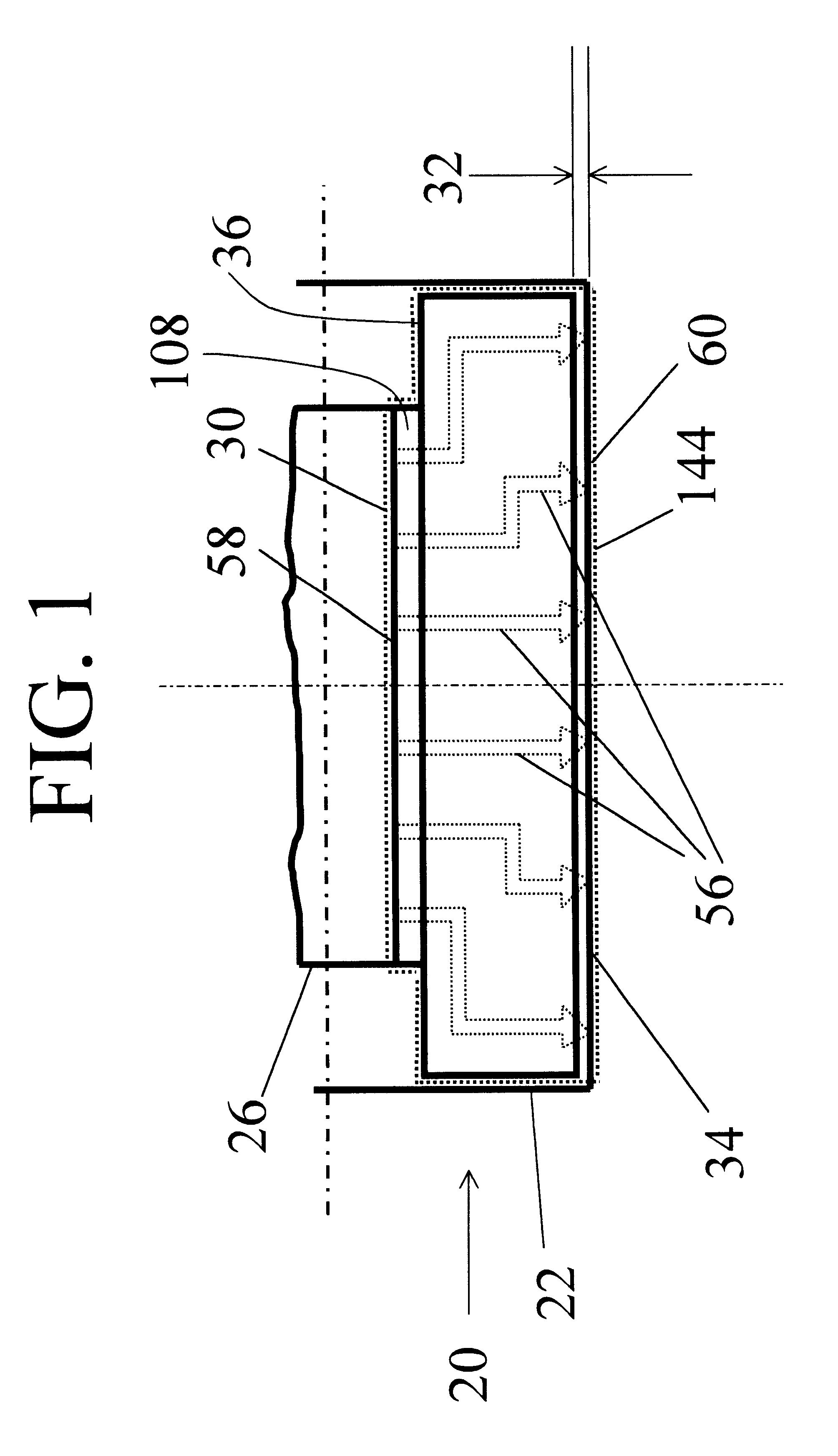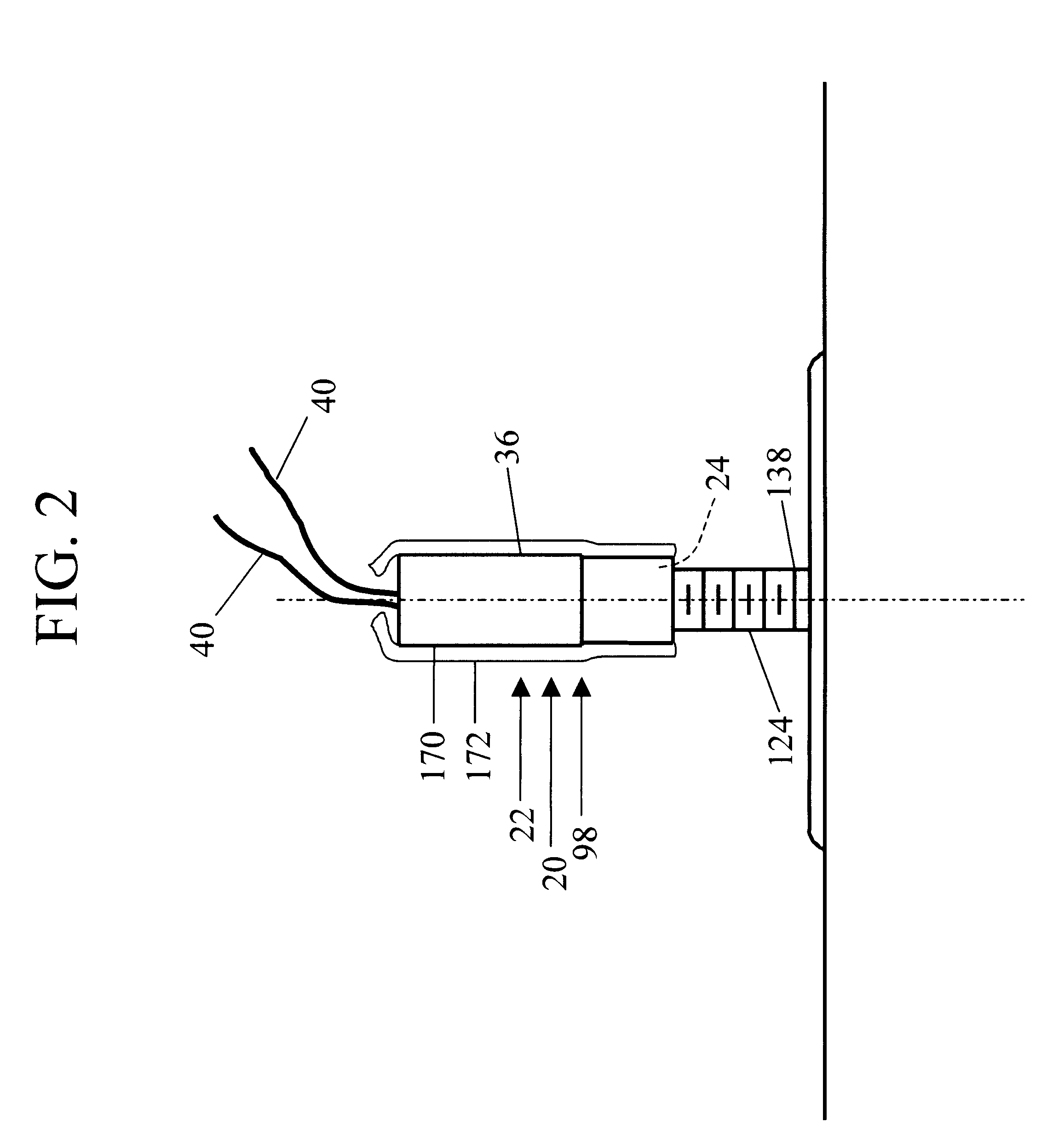Self-regulating heater
a self-regulating heater and heater technology, applied in the field of electric heating devices, can solve the problems of inability to provide heating tape, inability to provide heat transfer rates that available heating tapes can provide, and tapes are better described as "self-limiting" and other problems, to achieve the effect of reducing stress on the element and relatively easy bending and shear
- Summary
- Abstract
- Description
- Claims
- Application Information
AI Technical Summary
Benefits of technology
Problems solved by technology
Method used
Image
Examples
Embodiment Construction
Several self-regulating heaters were made and tested. The electrode surfaces were machined flat and smooth and electrical insulation over those surfaces was extremely thin; approximately 0.002" (0.05 mm), consisting of 0.001" (0.025 mm) polyimide film and 0.001" (0.025 mm) silicone adhesive.
Most of the tests were performed just to see if the heaters, with soldered bonds between the barium titanate PTC material and heavy brass electrodes, would hold up in temperature cycling. They did.
We also then ran a simulated application performance test.
For background, there are certain studs fastened to internal aircraft surfaces in large numbers for the purpose of attaching and supporting wiring harness, hydraulic and pneumatic lines, as well as structural members in some cases. At the base of each such stud is a flange and flat surface of composite material, usually fiberglass reinforced epoxy, for attachment to the aircraft surface by bonding with a high performance epoxy adhesive. The surfa...
PUM
| Property | Measurement | Unit |
|---|---|---|
| total thickness | aaaaa | aaaaa |
| total thickness | aaaaa | aaaaa |
| total thickness | aaaaa | aaaaa |
Abstract
Description
Claims
Application Information
 Login to View More
Login to View More - R&D
- Intellectual Property
- Life Sciences
- Materials
- Tech Scout
- Unparalleled Data Quality
- Higher Quality Content
- 60% Fewer Hallucinations
Browse by: Latest US Patents, China's latest patents, Technical Efficacy Thesaurus, Application Domain, Technology Topic, Popular Technical Reports.
© 2025 PatSnap. All rights reserved.Legal|Privacy policy|Modern Slavery Act Transparency Statement|Sitemap|About US| Contact US: help@patsnap.com



